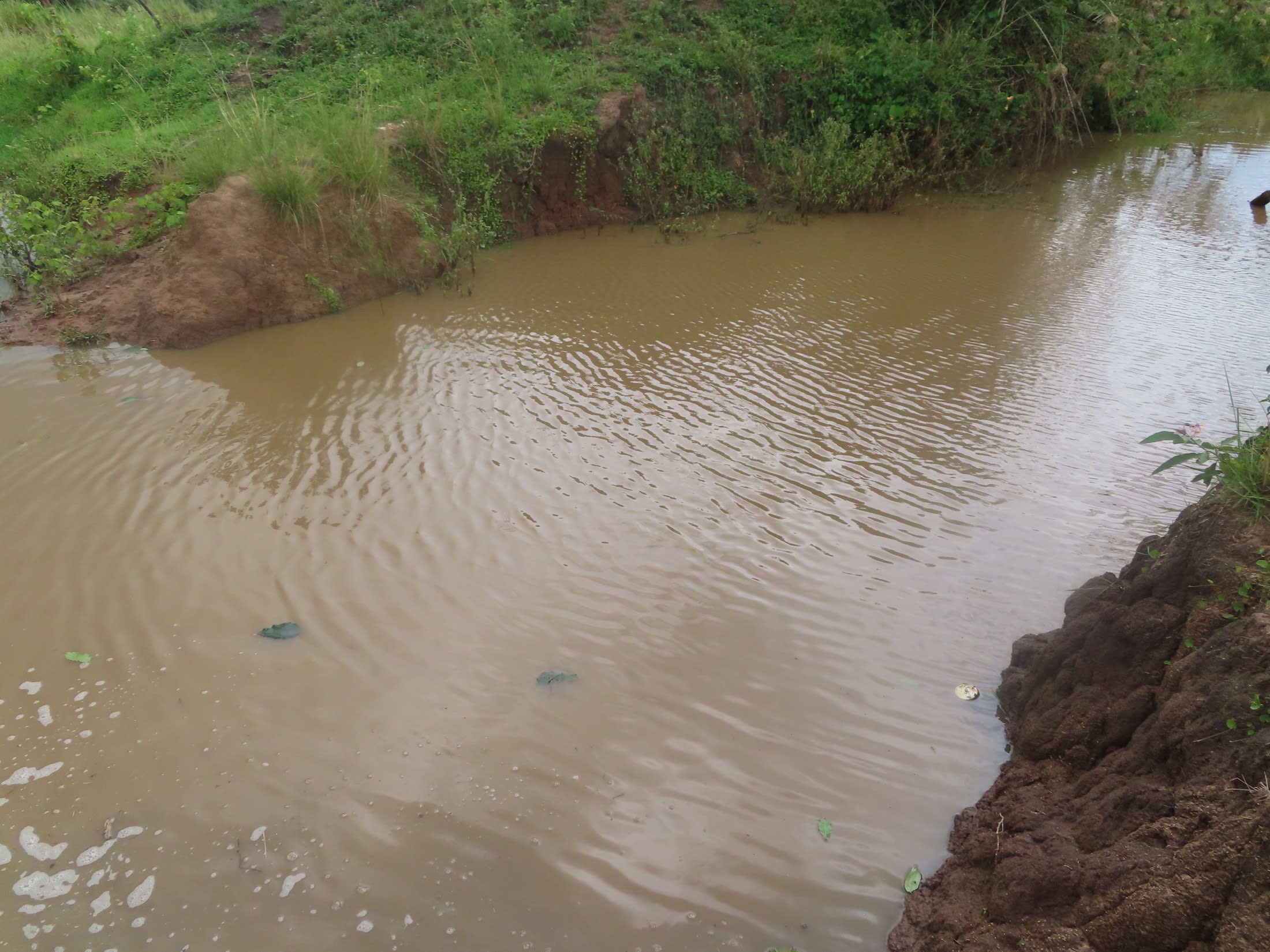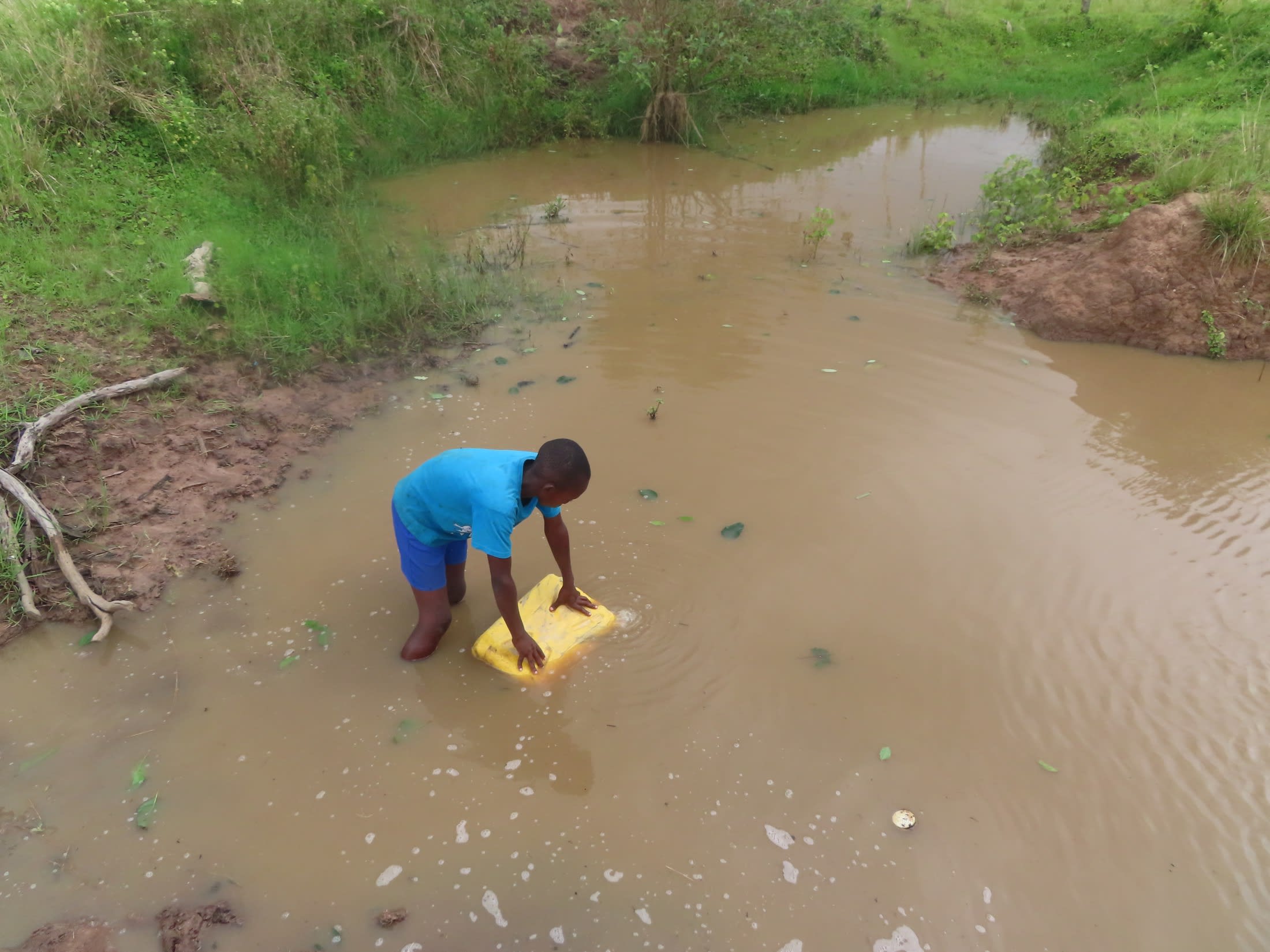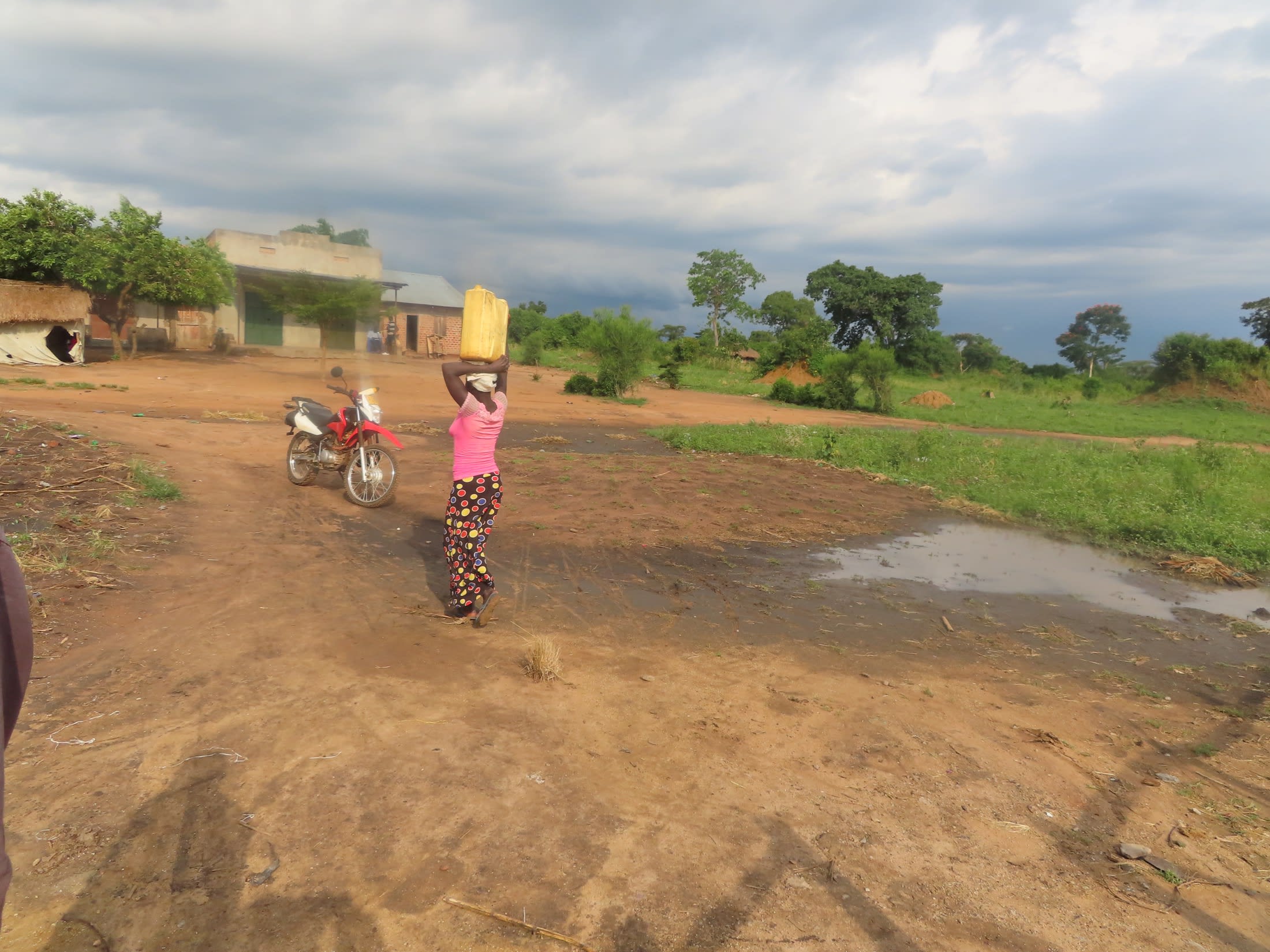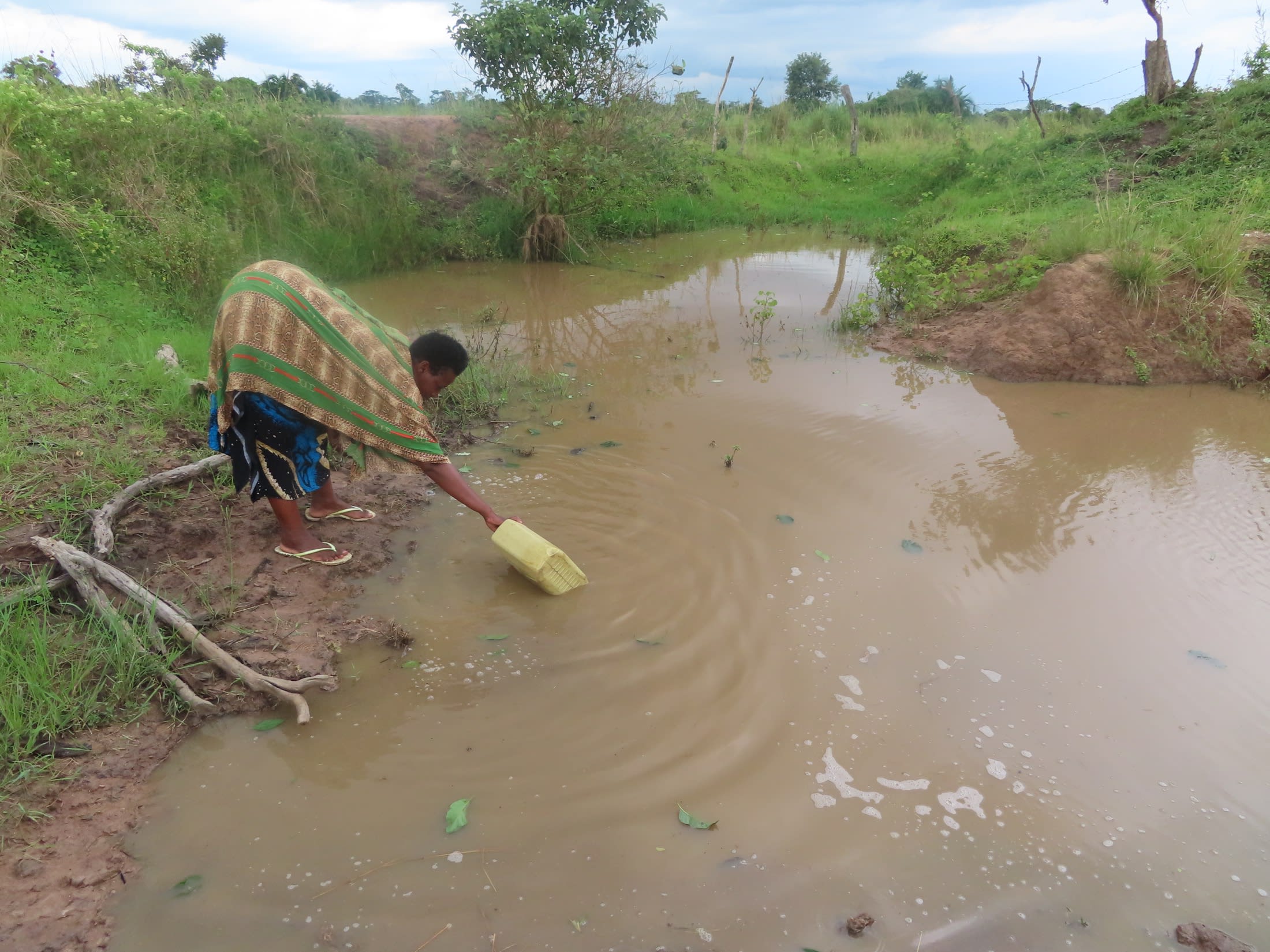The primary water source for the 375 people living in Rwensororo is local dam water that community members primarily use for cooking and laundry.
It is an open source prone to seasonal drying, making it unreliable, as well as contamination from animals and humans, rendering it dangerous to consume.
Looking at the water, it's easy to see that it's dirty. When used for washing clothes, it stains clothing, and when used for cooking, food changes color. But even so, when community members do not have the time or energy to search for water from other sources, they end up drinking it, paying a high cost to their health.

"As a result of drinking this water, the children and we, the elders, are always affected by cough, typhoid, [and] diarrhea," said Flavia, an elder in Rwensororo.
But community members, especially the children, are also paying for their lack of water access in other ways.
"I leave school at 6:00 pm and reach home at 6:45 pm. Immediately after reaching home, I change clothes, take a drink, then rush to pick [up] the bicycle to go and collect water at [the] Kyanga Trading Centre borehole. Due to [the] overcrowding, I get home late, at around 9:00 pm," said 13-year-old Eriya K., shown below collecting water from the dam.

Eriya continued: "I move [to the waterpoint] in fear. [I] clean my uniforms late, thus putting them on when they are [still] wet. Reading books becomes hard, and [there is] no doing homework."
The alternative point is a borehole located in another community, but the trip is far, so collecting water from here is time-consuming, wasting hours of community members' time. And once they arrive, they waste even more time waiting in long lines because it is overcrowded. Those who are fortunate enough to afford bicycles or a motorcycle can use those instead of carrying the water so far on their heads, but still, it is exhausting.

"In dry seasons, the dams dry, and [I] have to buy water from the vendors, that is water trucking," shared housewife Martene Jovia, shown below, collecting water from the dam.
"These trucks are always busy, especially during these [dry] seasons, and thus, acquiring water is hard. Therefore, cooking becomes very difficult, so I wait for the children to come back from school to go and collect water from Kyanga Trading Centre. My son moves a long distance of about three kilometers using a bicycle, finds a long queue, and as a result, he reaches home at 8:00 pm. That is the time I start preparing food, and by the time food is ready, all the children are already asleep, thus sleeping hungry."

A new well will help the community access safe drinking water and provide sufficient water for other domestic activities as well. And hopefully, people will gain back their time and health so their daily lives can improve.
Note: Our proposed water point can only serve 300 people per day. We are working with the community to identify other water solutions that will ensure all 375 people in the Rwensororo community have access to safe and reliable drinking water.
Here's what we're going to do about it:
New Borehole
This new borehole is an exciting opportunity for this community! We work with the community to determine the best possible sites for this well.
We conducted a hydrogeological survey and the results indicated the water table is an ideal candidate for a borehole well. Due to a borehole well's unique ability to tap into a safe, year-round water column, it will be poised to serve all of the water needs for this community, even through the dry months.
Community members will help collect the needed construction materials such as sand, rocks, and water for mixing cement. They will also provide housing and meals for the work team, in addition to providing local laborers. We will complement their materials by providing an expert team of artisans and drilling professionals, tools, hardware, and the hand-pump. Once finished, water from the well will then be used by community members for drinking, handwashing, cooking, cleaning, and much more.
Training
Training's main objectives are the use of latrines and observing proper hygiene practices since these goals are inherently connected to the provision of clean water. Open defecation, water storage in unclean containers and the absence of hand-washing are all possible contaminants of a household water supply. Each participating village must achieve Open Defecation Free status (defined by one latrine per household) prior to the pump installation for this borehole well.
This social program includes the assignment of one Community Development Officer (CDO) to each village. The CDO encourages each household to build an ideal homestead that includes: a latrine, a handwashing facility, a separate structure for animals, a rubbish pit and a drying rack for dishes.
We also implement the Community-Led Total Sanitation (CLTS) approach with each of our village partners. This aims to improve the sanitation and hygiene practices and behaviors of a village. During these sessions, village leaders naturally emerge and push the community to realize that the current practices of individual households – particularly the practice of open defecation – are not only unhealthy, but affect the entire village. CLTS facilitates a process in which community members realize the negative consequences of their current water, sanitation and hygiene behaviors and are inspired to take action. Group interactions are frequent motivators for individual households to build latrines, use them, and demand that other households do the same.
Improved Sanitation
The aim is that all households own an improved latrine. Many households do not use a latrine but use the bush. Due to open defecation, feces are spread all over the village. This leads to waterborne diseases and contamination of groundwater and surface water. Our aim is that the community is able to live a healthy life free of preventable diseases. We endeavor that at the end of our presence in the community, people will have both access to sustainable, clean water and access to sanitation. We have now organized families to form digging groups for latrine construction, and empowered them with tools to use.





 Borehole Well and Hand Pump
Borehole Well and Hand Pump
 Rehabilitation Project
Rehabilitation Project























